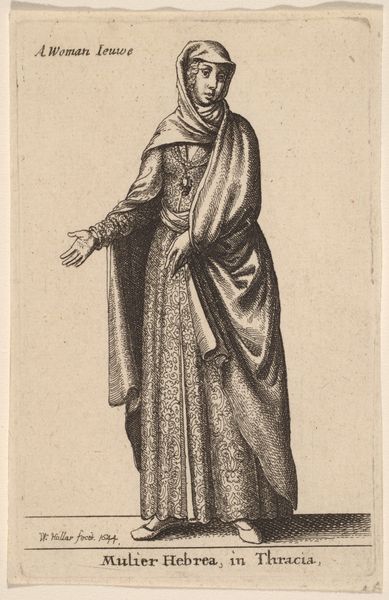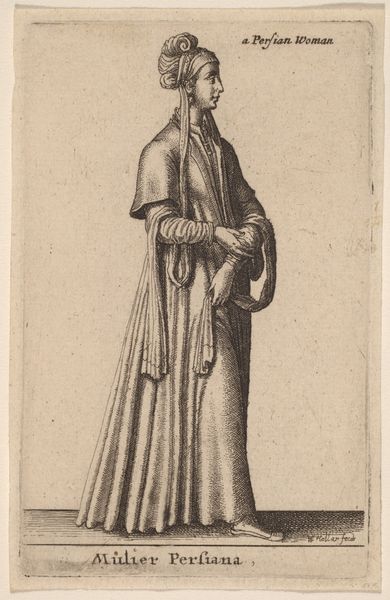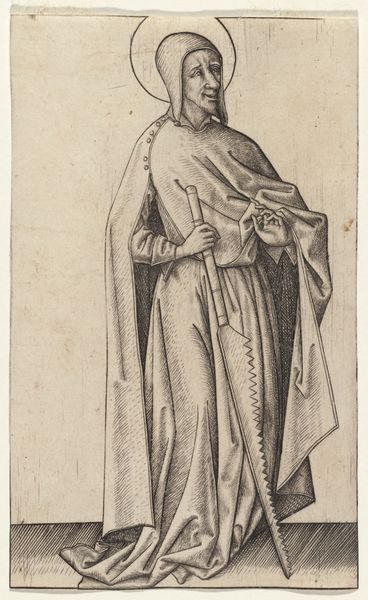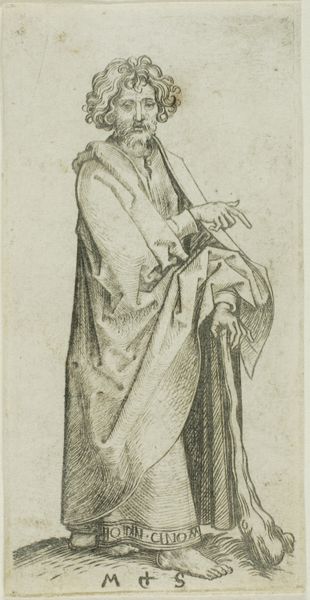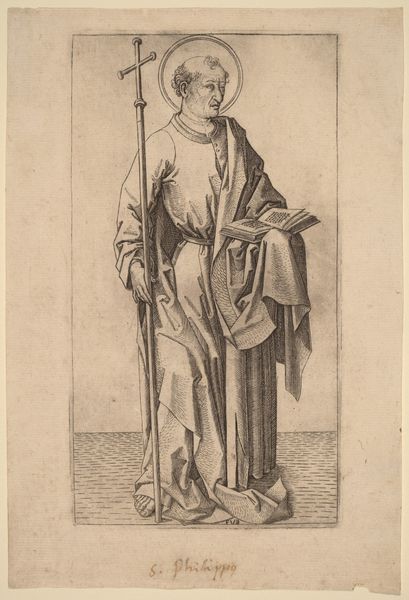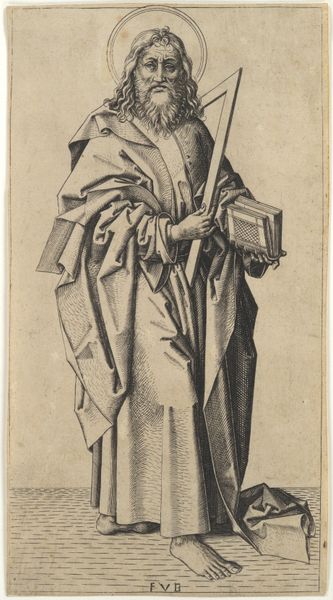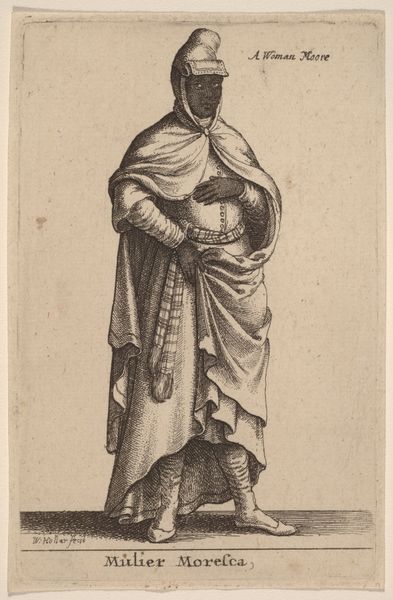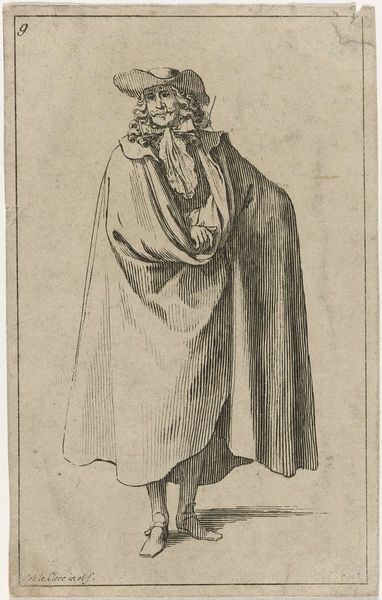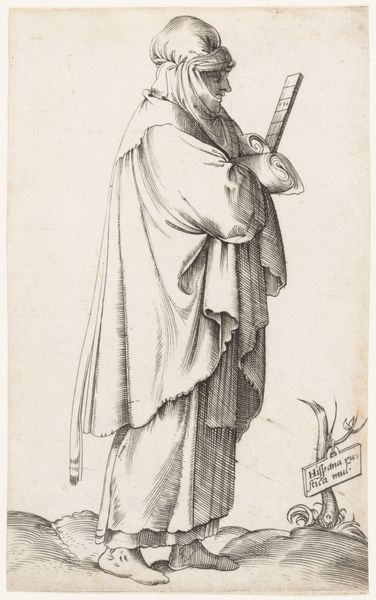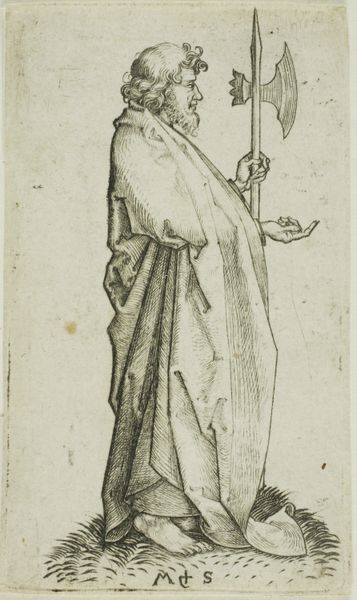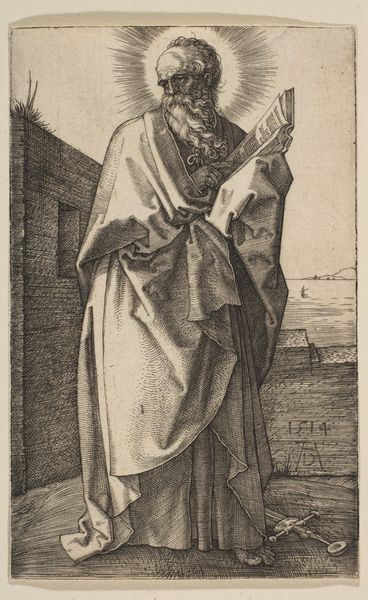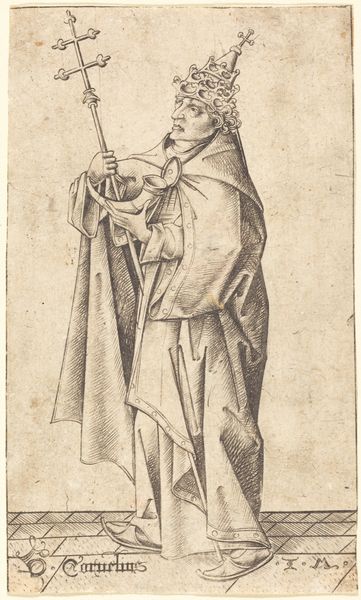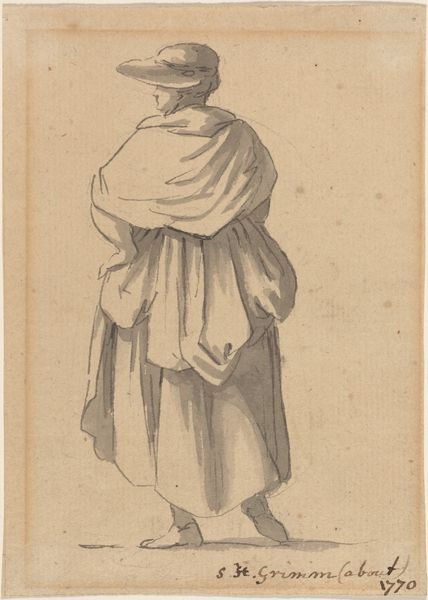
print, engraving
#
portrait
#
baroque
# print
#
old engraving style
#
portrait drawing
#
history-painting
#
engraving
Copyright: National Gallery of Art: CC0 1.0
Editor: So here we have Wenceslaus Hollar's 1644 engraving, "Mulier Habitans Algieri", or "Woman Dwelling in Algiers." The detail is astonishing, especially in the folds of her clothing, and she has this captivating yet reserved expression. What first strikes you about this piece? Curator: It’s interesting how Hollar uses the vocabulary of portraiture to document, almost anthropologically, this "type" of North African woman. Notice the careful rendering of the costume – not merely as fabric, but as signifiers of identity, status, perhaps even belief. How do these visual cues operate in your own understanding of the subject? Editor: I see what you mean! I was so focused on her as an individual. It feels like he's capturing an idea of a person, maybe influenced by his own culture’s perspective? I guess that kind of cultural filtering is always a risk when we're interpreting images across different backgrounds. Curator: Precisely. Consider the act of translation itself: Hollar transforms a living individual, a cultural reality, into a two-dimensional image, a printed page circulating within a European context. Do you sense any hint of idealization, perhaps even exoticism, in how he portrays her? Or is there a certain objective neutrality? Editor: I think the objective neutrality might be what makes the engraving feel so striking and affecting; the simplicity really draws me in. And it pushes me to reconsider how Europeans depicted non-Europeans during the 17th century, and the way symbols played a role in shaping opinions. Curator: Yes, Hollar gives us so much to ponder in this engraving. It encourages us to see art as an artifact embedded in complex histories. Editor: I never thought about an engraving containing this much history and emotion!
Comments
No comments
Be the first to comment and join the conversation on the ultimate creative platform.
